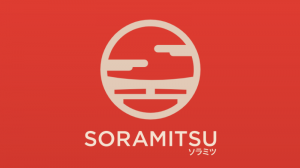
Hyperledger Iroha is already gaining traction, as Alexander Yakovlev from Moscow Exchange Group’s National Settlement Depository, states: “We looked for a solution that fits our requirements and is 100% open-sourced and oriented for the specific needs of our task. Features, such as Iroha’s account management and supportive community, in addition to Soramitsu’s KYC application, were key factors in our decision to use Hyperledger Iroha for D3 Ledger. Iroha’s existing adoption in several countries, and the practical use case with the Cambodian central bank, were additional benefits.”

Enabling Hyperledger Iroha
Hyperledger Iroha is an open source DLT platform that is a part of Hyperledger Greenhouse. Initially developed by Soramitsu, the Linux Foundation has released a production-ready (version V1.0) of the Hyperledger Iroha blockchain framework (the Linux Foundation is a collaborative with more than 270 members created to advance cross-industry blockchain technologies).
The release of Hyperledger Iroha is now the fourth active Hyperledger project to reach Version 1.0: it follows:
- Hyperledger Fabric
- Hyperledger Sawtooth
- Hyperledger Indy.
To achieve the 1.0 release, as part of the open development and open governance requirements of The Linux Foundation, Hyperledger Iroha had to pass various tests, such as audits of:
- security
- stability
- durability.
The design of Hyperledger Iroha enables developers to implement applications using blockchain with simplicity, yet with features such as:
- digital asset management
- multiple signature accounts
- a role-based permission model.
Selected Hyperledger Iroha capabilities
Blockchain (or Distributed Ledger Technology, DLT) forms the basis of distributed applications and can execute generation, transmission, and reception of digital currencies and assets on a network – without relying on a central authority. By using blockchains, it becomes possible to build systems which are robust against:
- cyberattacks
- censorship
- falsification of data.
The Hyperledger Iroha blockchain has a modular, command-driven architecture. This enables developers to create complex business logic – without writing custom code – to execute on the blockchain, which has particular attractions for those:
- creating mobile and web applications for digital asset management
- building applications requiring a decentralised digital identity.
Hyperledger Iroha is a straightforward DLT implementation, except that it takes inspiration from the Japanese Kaizen principle — “eliminate excessiveness” (muri). Iroha brings essential functions for asset and identity management needs and uses an efficient and trustworthy byzantine fault-tolerance. In addition, it:
- exists as open-source under the Apache 2.0 licence which means that developers can create any applications based on Iroha – both open sourced and private.
- is easy to understand and quick to deploy – it only takes around 10 minutes to start an Iroha node
- provides a reliable API for basic operations: the commands are safe and tested by professionals
- has a client-orientation, with examples and libraries to facilitate the creation of Iroha-based applications in different languages
- will support smart contracts in the near future.
In use and in PoCs
Because developers have the tools to realise complex, real-world use cases, Hyperledger Iroha is already in use in financial institutions such as:
- the Moscow Stock Exchange Group’s National Settlement Depository
- the Slovenian CSD
- KDD
- the National Bank of Cambodia.
These have built production applications. Additionally, multiple proof-of-concept applications are underway at other financial institutions (including major banks in Japan and Indonesia):
- Sompo Holdings
- Aioi Nissay Dowa Insurance
- Rakuten Securities.
Enterprise Times: what does this mean
Soramitsu sees Hyperledger Iroha as a means to build innovative products, such as its Sora family:
- Sora Identity KYC and user verification application
- Sora Pay application (for global-interbank payments)
- Sora decentralised autonomous economy (based around the XOR token).
The objective, for Soramitsu, is to assist financial institutions with regulatory compliance. But, perhaps with as much significance, is that Hyperledger Iroha has joined Fabric, Sawtooth and Indy as Hyperledger approved initiatives. The credibility this brings to the Linux Foundation and Hyperledger is probably as great as that given to Soramitsu.

























